Craft in Vietnam was formed and developed thousands of years ago. Experiencing many ups and downs in the process of development, now the handicraft industry is increasingly thriving and has a specific position in the consumer market. Currently, bamboo and rattan are handicrafts with great export value in Vietnam, favored by many foreigners, especially Japan, the US, Spain, and Russia. … Along with the process of international trade integration, the bamboo and rattan industry has also made strong changes and achieved many successes. So have you ever wondered where Vietnam's most famous bamboo and rattan village is? If you want to know which place it is, today let's refer to the top of the most famous bamboo and rattan craft villages in Vietnam through the article below.
-
Phu Vinh craft village
This is one of the craft villages from the 17th century in our country. Phu Vinh craft village is located in Phu Nghia commune - Chuong My - Hanoi. Phu Vinh village is famous for its beautiful and delicate craft products, hundreds of different designs, and genres. This is also a popular tourist destination.
Handicraft products here are diverse, over time, they have been combined with both traditional and modern colors with the unique subtleties of the craft village. Not only making everyday items such as trays, plates, baskets, baskets, etc., the people here also show their talents in beautiful souvenirs that require high technology such as photo frames, and furniture. decoration, portrait paintings, diaphragms, couplets, ... and also interior products for those who like uniqueness such as tables and chairs, vases, night lights, etc. Only from rattan fibers, and white bamboo rods, a craftsman with god-like hands can create beautiful items that attract many customers.
With their creativity and ingenuity, the people here have produced countless simple and rustic rattan and village-style products. With their skillful hands, the craft village has developed and built many establishment
s in the district to create jobs for workers. Passion and love for the traditional craft have been shown in each product of the craftsmen. Therefore, those products have been present in many countries around the world.
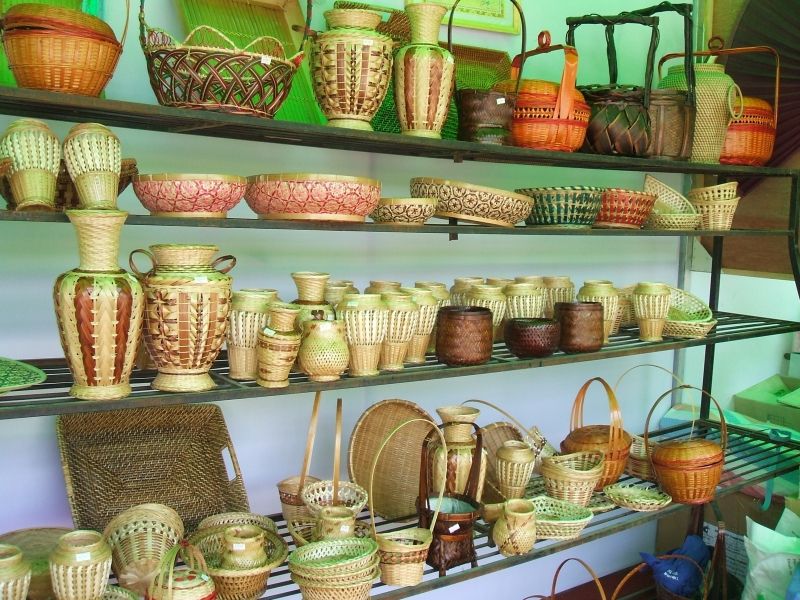
-
Tang Tien craft village
Tang Tien bamboo and rattan with more than 300 years of establishment and development in Tang Tien commune - Viet Yen - Bac Giang. Craft village is famous for its high-quality products such as cushions, pillows, bags, blinds, etc. The products of the craft village are carefully kept by artisans and do not have termites or fade. It is this quality that has helped the brand of Tang Tien craft village be trusted by users.
For a long time, the peaceful village has been the destination of many traders and foreign tourists who have an interest and love for bamboo, rattan, and other products made from bamboo and rattan, the iconic image of the Vietnamese people. Therefore, bamboo and rattan products here are constantly reaching out all over Asia, Europe, America, and Africa. Not only has a long-standing traditional profession, and beautiful products, but increasingly diverse designs, designs, and products have given wings to bamboo and rattan to reach the hands of people who love handicraft products.
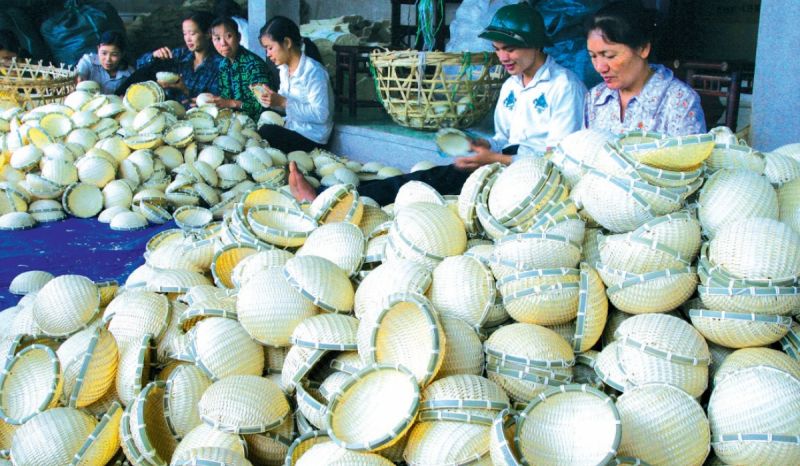
-
Ninh So craft village
The village of knitting, rattan, and bamboo, Ninh So is one of the long-standing traditional craft villages of Thuong Tin's hometown. Ninh So bamboo and rattan were also formed a long time ago and can be considered the earliest in Hanoi today. Ninh So bamboo and rattan in Ninh So - Thuong Tin - Hanoi is a famous craft village with items associated with farmers on a sunny day and two veils of mist such as baskets, baskets, ... to catch fish and shrimp. The intelligence and creativity of the people here have helped them to have a fuller life thanks to the production of shrimp and fish caught every day during the time when the country was in turmoil and went into the renovation. However, the country is on the rise, and new production technologies are being introduced, but those items are still useful for farmers in economically disadvantaged areas.
Bamboo knitting here is increasingly developed, so sophisticated that workers only need to look at photos to think of how to knit, creating a very vivid landscape or portrait paintings, like works of art. From the 20s of the twentieth century to the present, many artisans of Ninh So bamboo village have their products displayed at domestic art fairs. In 1931, Ninh So 's rattan, bamboo and rattan products were displayed at an exhibition of handicrafts in Paris - the French capital. Nowadays, many Ninh So rattan and bamboo products are exported to a number of Asian and European countries.
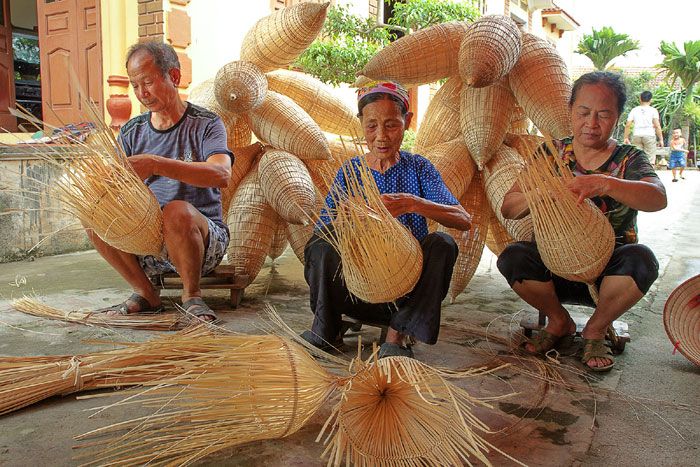
-
Thach Cau craft village
The land that is considered the father of weaving is also the place where bamboo and rattan exist and develop. Thach Cau bamboo and rattan in Nam Truc - Nam Dinh have existed and developed for thousands of years.
Thach Cau handicraft village in Nam Dinh has been formed and existed for generations in Thach Cau village, Nam Tien commune (Nam Truc, Nam Dinh). Here, from ten-year-old children to old men and women "outside of the decade" are still knitting bamboo and bamboo every day to help that rustic profession continue the history of formation and development for hundreds of years.
"Thach Thach Cau basket is at the top of the world" is a song expressing pride in the bamboo and rattan knitting village of the people of Thach Cau village, Nam Tien commune. That has helped the traditional craft of Thach Cau preserve and develop for hundreds of years.
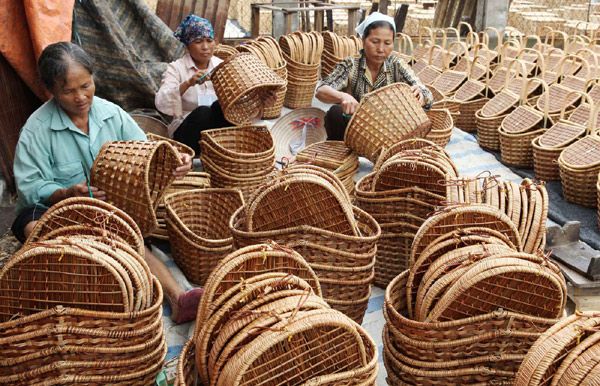
-
Ngoc Dong bamboo and rattan
Ngoc Dong village, Duy Tien, where there is a traditional craft, has been on the rise. The reputation of the craft village is becoming more and more resounding day by day, with people coming to order products, and sellers of raw materials increasingly busy.
Ngoc Dong handicraft village in Hoang Dong commune, Duy Tien district, Ha Nam province is also one of the famous bamboo and rattan craft villages of our country. This is a craft village that has existed for a long time with products not made from bamboo and other materials like other craft villages, but it is formed from rattan and jasmine trees. Derived from these two trees, skillful artisans have produced products such as rattan chairs, jars, plates, and bowls, ... with many different designs and types. The bamboo and rattan craft of Ngoc Dong craft village has brought people here a more stable and prosperous life.
It can be said that Ngoc Dong is the most famous place for slanting rattan products, by skewing rattan fibers linked with nan Giang to create products with very highly sustainable structures, and no deformation in all areas. In various weather conditions such as baskets, suitcases, trays, plates..., and even large crates with excellent rigidity can sit on without flattening.
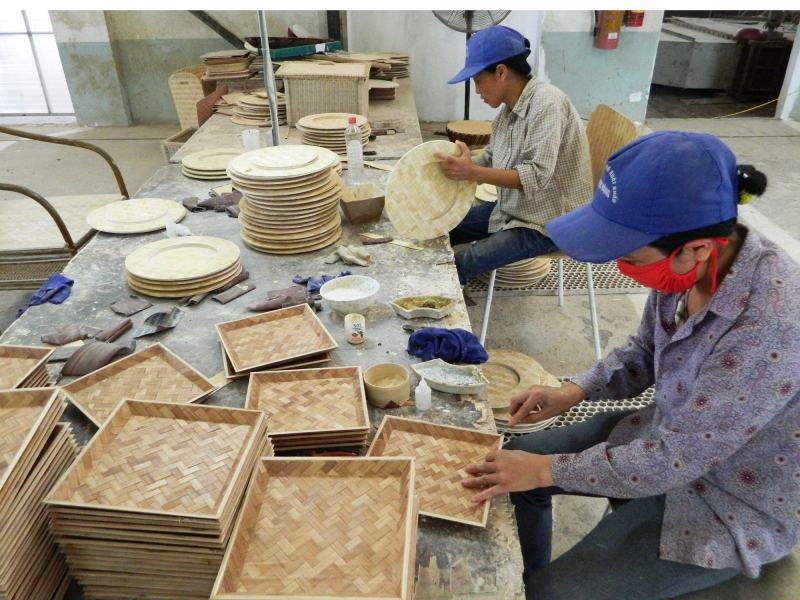
-
Lien Khe bamboo and rattan
Lien Khe bamboo and rattan in Khoai Chau district, Hung Yen province is one of the famous export bamboo and rattan craft villages of our country. Craft villages were formed in the 90s of the 20th century and developed to this day. In the beginning, building a career was still quite difficult and it seemed impossible to survive. But it is the love of the craft of the people here that have helped the craft village to survive and develop to replicate with many small establishments in Lien Khe commune.
Currently, Lien Khe bamboo and rattan products are growing strong day by day, becoming a familiar brand used in the decoration of interior spaces imbued with Vietnamese culture. The products of Lien Khe rattan and bamboo are exported to many countries such as Japan, Korea, and the USA... Through export orders, Lien Khe rattan and bamboo products have won the hearts of many international customers. Orders are increasing day by day, increasing in quantity and variety in designs.
For the first time participating in Hue Traditional Craft Festival 2019, Lien Khe rattan and bamboo craft village will bring many rich and diverse product designs such as food trays, umbrella boxes, racks, flower pots, baskets containers, paper boxes…
With simple, rustic but no less sophisticated and attractive features, with high aesthetic value and applicability, it is hoped that Lien Khe handicraft products will gradually assert their position. market and is increasingly known by tourists.
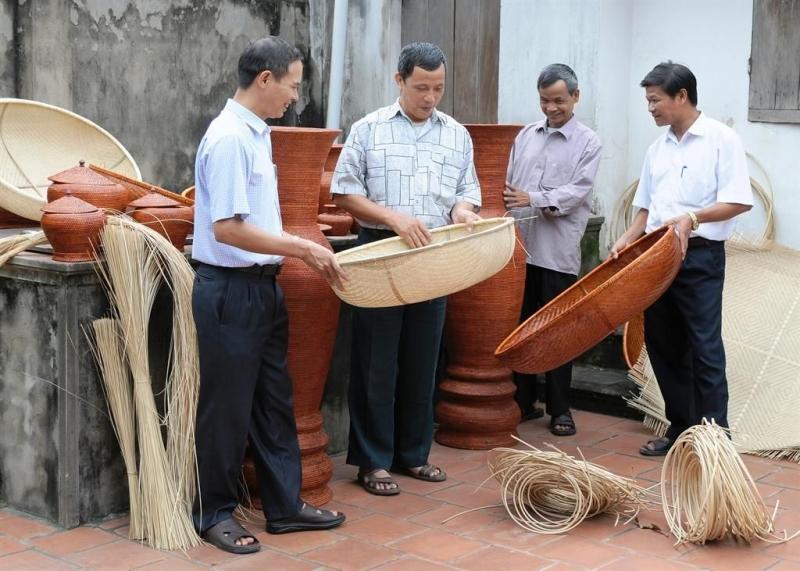
-
Bao La Handicraft Village
Originating as a small, outdated and in danger of becoming a small craft village, only specializing in knitting household bamboo and rattan products, Bao La village (Quang Phu commune, Quang Dien, Thua Thien - Hue) has a spectacular "makeover" step when creating useful handicraft products... serving daily life, not only for Vietnamese people but also expanding to the world market.
Bao La bamboo and rattan craft village is a traditional craft village formed and developed over 600 years in Thua Thien - Hue, which has been creating many regular jobs for local bamboo and rattan production households.
Bao La bamboo and rattan in Quang Phu - Quang Dien - Thua Thien Hue is proud to be the place that produces the most durable and quality baskets in our country. Baskets are the main product of Bao La craft village for generations. They are close, attached to farmers in the days of the harvest of their homeland. From the raw materials of bamboo, products such as baskets, shoes, and sieves, ... in turn, were born to serve the lives of workers throughout the country.
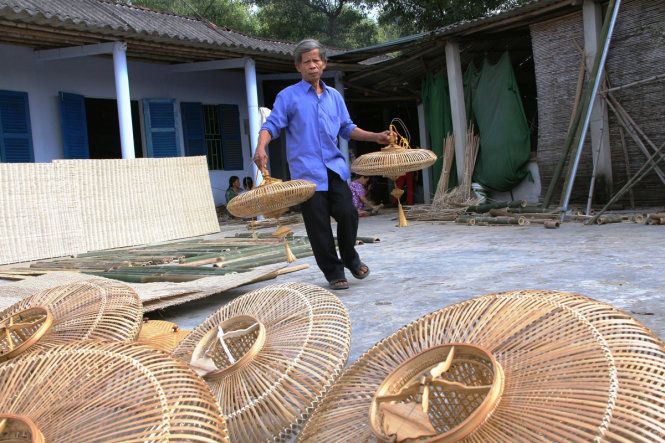
-
Thu Hong craft village
There is an old saying: "Bat Trang ceramics - Van Phuc village silk - Thu Hong bamboo - Ngu Xa bronze casting..." The old verse has never been reminiscent of the lands with famous craft villages. Everyone knows Bat Trang pottery, Van Phuc silk, and Ngu Xa bronze but not necessarily about Thu Hong bamboo village - a quiet, peaceful craft village on the winding Ca Lo river.
Thu Hong village used to be Thu Thuy village in Xuan Thu commune, Soc Son district, located along the Ca Lo river flowing into Cau river at Xa junction, with National Highway 16 running through. As a riverside village, Thu Hong hides under bamboo bushes, bearing the characteristics of the northern countryside. With that terrain, the villagers living along the Ca Lo River, built rafts to earn a livelihood. In the past, hundreds of households doing bamboo work in the small village became vibrant with the sound of saws, chisels, etc.
In the past, the village on the dike only contemplated the rotten season all year round, there was nothing to build a communal house to worship the village's emperor. Around the village at that time, there were only bamboo and bamboo, so the villagers made a temple to worship the emperor with this available material. Over the years, gradually people made all household items out of bamboo baskets, baskets... to the table, chairs, couches, bamboo beds, and bamboo cots. Initially, these products were only meant to serve the needs of daily life but were not considered a commodity. However, under the skillful and creative hands of the people of Thu Hong, the products made from bamboo are loved by people everywhere, becoming a commodity at any time. Bamboo in the village is not enough, people have to move bamboo from other areas.
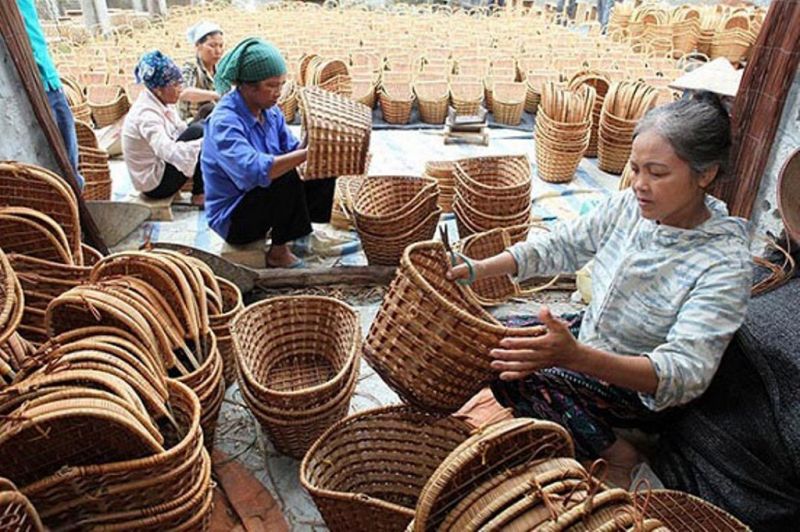
-
Trieu Xa craft village
Trieu Xa craft village in Trieu De commune, Lap Thach district (Vinh Phuc) has been recognized as a traditional craft village since 2006. This place still maintains and develops a variety of bamboo and rattan products. high aesthetic value and is an attractive craft village tourist destination.
According to the elderly, from ancient times, there were some people in the village who studied bamboo and rattan craft in the craft villages of the former Ha Tay province (now part of Hanoi) and Hung Yen… and then returned to their locality to work. profession, teach people. Initially, the products were made mainly for daily life and labor, production such as baskets, baskets, baskets, springs, nongs, etc., and later upgraded to become fine art products. The craft in Trieu Xa has contributed to creating jobs for people, especially in their leisure time, and provides a fairly stable current source of income, contributing to poverty alleviation and rural construction. new to the local.
Unlike other traditional jobs, bamboo and rattan craft is not too difficult, anyone can do it and do it at any time of the year. On non-seasonal days, walking along the small streets of the village is not difficult to see people from old to young gathering in houses to work together. Even the six- or seven-year-old children here already know how to knit, pave... After a period of study, many children participate in helping their parents do their jobs. As one of those who have been with bamboo and rattan for a long time, Mr. Ta Duc Trung shared: “This profession looks simple, but requires workers to work hard. If you work hard, one person can make 15-20 products in five to three days.” In recent years, besides regular customers looking to order, quite a lot of tourists visit and travel to Trieu Xa on craft village tours. They are eager to learn, practice making products, and buy bamboo and rattan handicrafts as souvenirs. This has opened the way for the maintenance and development of craft villages from tourism.
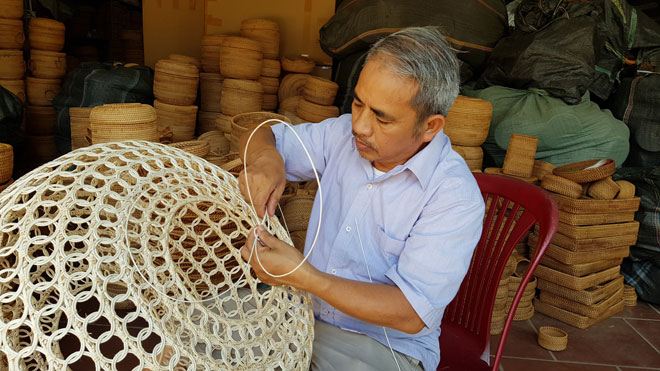
-
Van Son crafts
Established in 2013, in the context of many bamboo and rattan businesses being "half-dead, half dead", Van Son bamboo and rattan cooperative (cooperative) quickly developed and gradually asserted its brand in the market. schools nationwide. The success of Van Son Cooperative not only brings jobs and stable income to local poor workers but also creates a new breath of life for the collective economy which is weak in the mountainous district of Tuyen Hoa.
After a few years of operation, the factory scale as well as the equipment and machinery of Van Son Cooperative has expanded much more. Van Son bamboo and rattan products have found a foothold in the market and gradually asserted the brand. The consumer market is also stretched from Hanoi to the Mekong Delta.
It is worth mentioning that the income of workers in the cooperative is constantly increasing, now the average income is over 54 million VND/person/year. Every year, Van Son Cooperative also coordinates with localities in the district and expands to Minh Hoa district to organize many vocational training classes for rural workers, thereby creating a premise for establishing cooperative groups to provide raw materials. materials and product consumption.
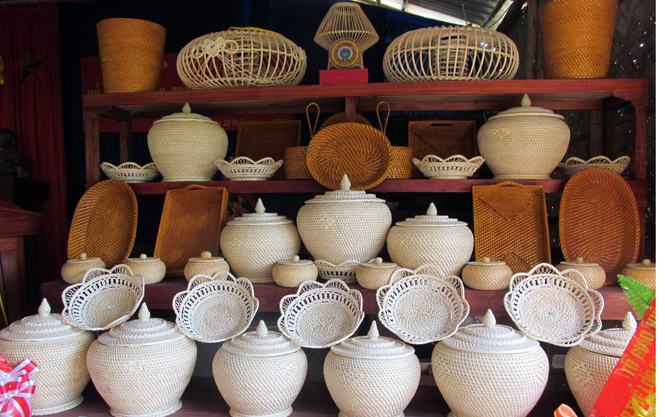
Above are some famous bamboo and rattan craft villages of our country. Hope this article will bring you a lot of useful information!







 config
config view
view logs
logs 15360.0 KB
15360.0 KB 240 ms
240 ms 21
21



